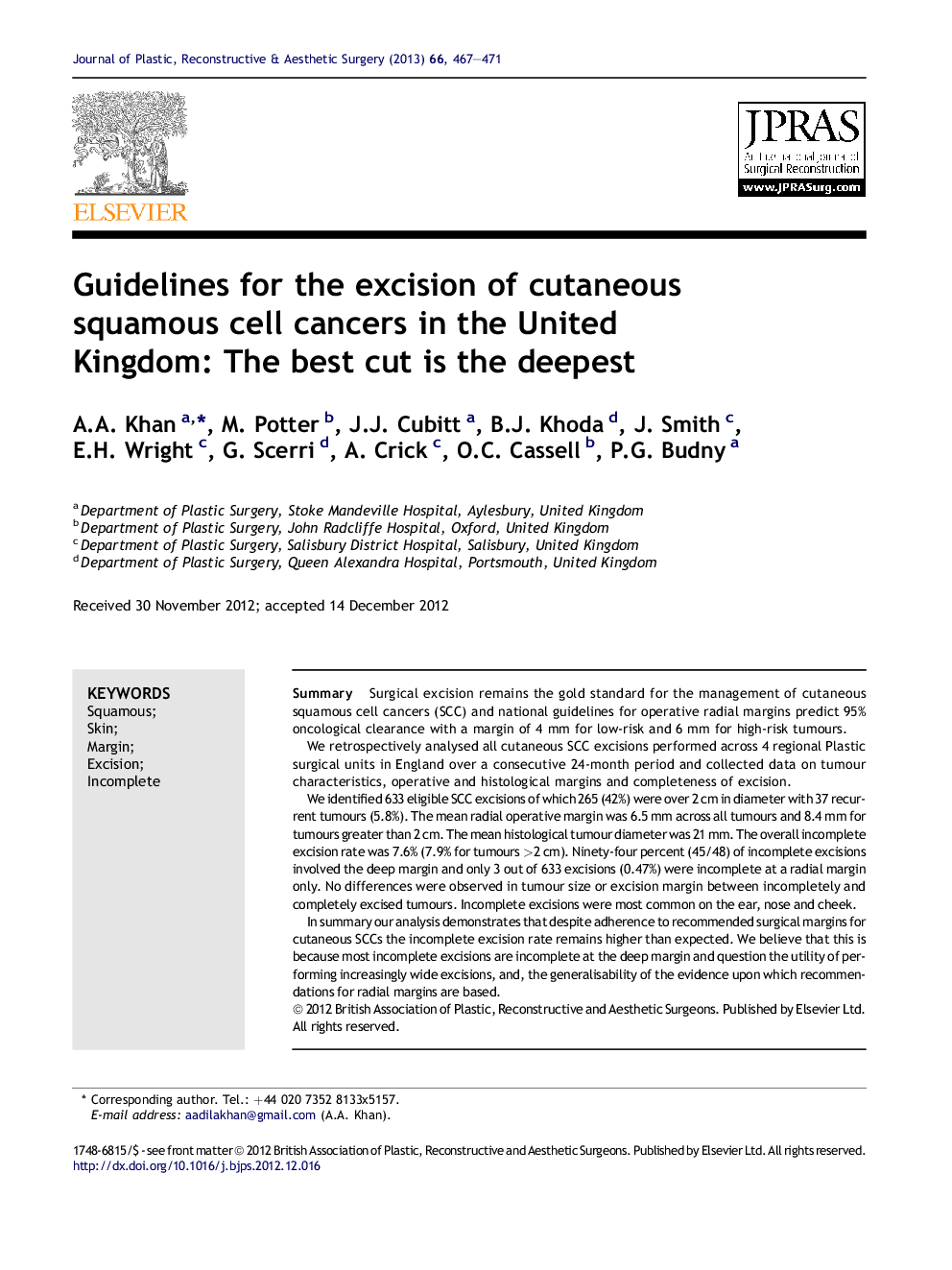| Article ID | Journal | Published Year | Pages | File Type |
|---|---|---|---|---|
| 4118405 | Journal of Plastic, Reconstructive & Aesthetic Surgery | 2013 | 5 Pages |
SummarySurgical excision remains the gold standard for the management of cutaneous squamous cell cancers (SCC) and national guidelines for operative radial margins predict 95% oncological clearance with a margin of 4 mm for low-risk and 6 mm for high-risk tumours.We retrospectively analysed all cutaneous SCC excisions performed across 4 regional Plastic surgical units in England over a consecutive 24-month period and collected data on tumour characteristics, operative and histological margins and completeness of excision.We identified 633 eligible SCC excisions of which 265 (42%) were over 2 cm in diameter with 37 recurrent tumours (5.8%). The mean radial operative margin was 6.5 mm across all tumours and 8.4 mm for tumours greater than 2 cm. The mean histological tumour diameter was 21 mm. The overall incomplete excision rate was 7.6% (7.9% for tumours >2 cm). Ninety-four percent (45/48) of incomplete excisions involved the deep margin and only 3 out of 633 excisions (0.47%) were incomplete at a radial margin only. No differences were observed in tumour size or excision margin between incompletely and completely excised tumours. Incomplete excisions were most common on the ear, nose and cheek.In summary our analysis demonstrates that despite adherence to recommended surgical margins for cutaneous SCCs the incomplete excision rate remains higher than expected. We believe that this is because most incomplete excisions are incomplete at the deep margin and question the utility of performing increasingly wide excisions, and, the generalisability of the evidence upon which recommendations for radial margins are based.
